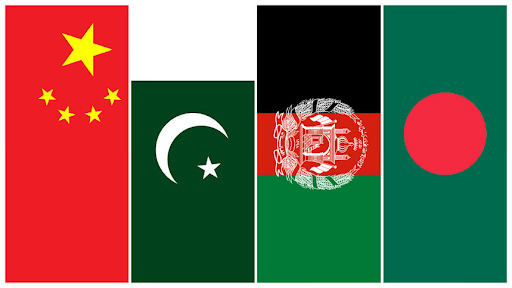Fast forward a decade to June 19, 2025, when officials from China, Pakistan, and Bangladesh met in Kunming, China. Political analysts have since speculated about the formation of a new 'four-nation' alliance or 'Quad' in the region.
An article published on July 8 in Pakistan’s Dawn newspaper, titled South Asian Quad?, highlighted that, with China’s assistance, Pakistan has strengthened ties with two key South Asian nations—Afghanistan and Bangladesh—in May and June. The Strategic Dialogue Forum involving China, Pakistan, and Afghanistan, established a decade ago, has gained momentum due to recent geopolitical shifts, particularly with improved diplomatic relations between Pakistan and Afghanistan. Additionally, the June meeting with Bangladesh has led analysts to believe this trilateral could evolve into a 'four-nation alliance,' signaling Pakistan’s focus on forming a new regional bloc.
Some suggest this alliance aims to isolate India in South Asia.
India’s ‘Failure’
In November 2014, at the 18th SAARC Summit in Kathmandu, India proposed an agreement to enhance connectivity and trade among SAARC nations through vehicle movement. Pakistan’s objections led India to pursue the BBIN initiative with Bangladesh, Nepal, and Bhutan. On June 15, 2015, the BBIN countries signed the MVA to facilitate seamless cross-border movement of people and goods, aiming to reduce border complexities and trade barriers.
Despite the promise of barrier-free travel and faster goods transport, the BBIN initiative has shown little tangible progress over the past decade. While Bangladesh, India, and Nepal formally ratified the MVA in 2015, Bhutan only expressed interest last year. Reports from a March 5-6, 2024, meeting in Dhaka indicate Bhutan’s willingness to join, citing environmental and infrastructural challenges as prior obstacles. Discussions in Dhaka focused on the agreement’s progress and draft protocols for goods transport, following a prior meeting in New Delhi on March 7-8, 2022. The two-year gap between meetings underscores the initiative’s slow pace.
In September 2016, reports noted India’s approval of over $1 billion to improve road connectivity among Bangladesh, Bhutan, and Nepal, with $558 million allocated for road construction and upgrades to boost regional trade by 60%. However, after the August 2024 fall of Bangladesh’s ‘India-friendly’ Awami League government, India nearly halted visa issuance to Bangladeshi citizens, straining trade and bilateral ties. Over the past year, relations between the two nations have shown no signs of normalizing.
Ten years on, the India-led BBIN initiative appears stagnant, and the vision of seamless cross-border travel remains elusive.
Can China Succeed?
The political shift in Bangladesh has reshaped South Asian dynamics, creating opportunities for the existing China-Pakistan-Afghanistan trilateral to expand into a 'four-nation alliance.' As Dhaka’s ties with Delhi have cooled, Islamabad has grown closer, with Beijing’s support. Dawn’s article notes that Pakistan’s foreign policy now prioritizes smaller alliances, viewing SAARC’s ‘ineffectiveness’—exacerbated by India’s 2016 boycott of the Islamabad SAARC Summit—as a push toward alternative blocs.
The China-Pakistan-Afghanistan trilateral has seen successes, such as China’s commitment to the Pakistan-Afghanistan-Uzbekistan railway and efforts to reduce tensions between Pakistan and Afghanistan. These achievements have encouraged Pakistan to include Bangladesh in this framework. Islamabad also seeks Beijing’s help to counter India’s regional influence, especially after India rejected Pakistan’s proposal to make China a SAARC dialogue partner.
However, India perceives this potential alliance as a threat. On July 9, India’s Chief of Defence Staff General Anil Chauhan warned that a China-Pakistan-Bangladesh alliance could destabilize India’s security and stability.
The question remains: Can China succeed where India’s BBIN initiative faltered? Will Beijing learn from India’s challenges in fostering a sub-regional alliance?









